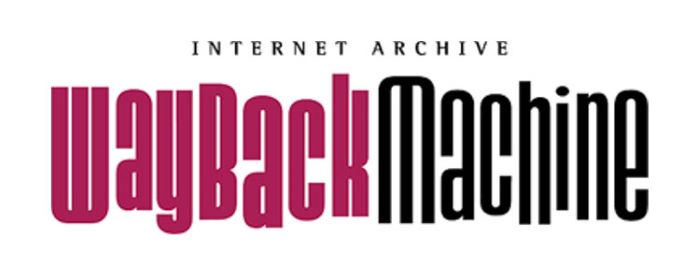7 fun ways to implement the Internet Archive: In 1996, as the Internet continued to welcome new websites at a rapid pace. Brewster Kahle and Bruce Gilliat noticed something troubling: Websites were also disappearing at a faster rate. So he founded the Net Archive, an organization with a method of slowly transcribing the Internet and storing its pages for ancient records. For the first several years, the Internet Archive’s digital catalog of all preserved Internet pages remained private. However, in 2001, Kahle and Gilliatt also developed what became known to the public as the “Wayback Machine”.
Since then, the Web Archive’s enterprise has certainly progressed from preserving Internet history to “providing general access to all human knowledge”, and the site has grown far beyond the bounds of the Wayback gadget. In recent times, it’s basically a huge, multidimensional virtual library containing every type of media under the sun.
Here are 7 fun ways to implement the Internet Archive
- Discover the cobwebs of the old.
The Wayback device – named after Mr. Peabody’s WABAC gadget on the Rocky and Bullwinkle display – remains alive and well, hosting over 860 billion web pages and constantly growing. The homepage features a banner that cycles through a set of pages from past years (e.g. the White House Internet site from 1996), but you can also look for keywords or entire URLs within the search bar at the top. For example, you can see what DVDs Netflix.com (or NetFlix.com instead) was selling on April 27, 1999. (Among them are Antz, The Waterboys, and I Still Know What You Did Last Summer.)

The Wayback Machine is a win-win solution every time you click on a hyperlink that takes you to an error page (or redirects you to a website’s homepage). Simply input the unique URL into the Wayback system and open the old model of that page.
-
Borrow e-books.
For whatever book your nearest library doesn’t have. It’s worth checking out IA’s text collection: the collection contains over 39 million texts of all types, many of them uploaded in collaboration with institutions like the Library of Congress and the Boston Are. public Library.
Even if something is in the public domain, available for unlimited reading, positive copyrighted works come with rules. IA practices managed digital lending, a system in which a physical book is digitized and that digital copy is loaned to one person at a time. The concept is that when you buy an e-book, you allow everyone to borrow it; As long as you don’t lend the physical replica while the digital model is still on loan – or loan the digitized version to more than one borrower at a time – it technically shouldn’t violate any copyright laws.
7 fun ways to implement the Internet Archive. When you consider that publishers sell e-book versions of print e-books as a separate product. However, no one shares the same opinion with that good decision, and a coalition of publishers is currently working on their A lawsuit has been received against IA for several loan violations. All this means is that if an e-book is still in print and an e-book version exists on the market. It will not need to be borrowed from an IA (with exceptions, including those made for people with disabilities. Also includes books) That effect reading). However, IA is free to lend out-of-print e-books and e-books without an e-book version.
-
Flip through magazines.
Your mag stash is probably limited to something you can keep on your e-bookshelf, though not a Net Archive. Mag Rack contains approximately 383,000 digital magazines (total) organized by topic: knitting, wrestling, humor, etc. If you studied one of the problems on the rack of MAD magazine every day. It would take you about 15 months to solve them.
-
Listen to live concert programs.
IA’s Stay Song Archive is a treasure trove for music lovers. Offering over 264,000 audio files of complete, live concert programs. The entirety of the collection inside is “from exchange-friendly artists who have chosen and is completely non-commercial, both for the rights of entry here and for any additional distribution,”. According to IA, and “for the artists”. Industrial releases are off limits.”
This is a great way to reminisce about a concert you may have missed or one you might want to buy while you’re waiting to enjoy it. Deadheads, rejoice: The Grateful Dead folder has over 17,000 uploads, making it the most significant by some distance. Elliott Smith, Tegan & Sara, and John Mayer are some of the other artists whose work is well-represented in the collection.
-
Watch movies and television shows.
7 fun ways to implement the Internet Archive. The Moving Photograph Archive is IA’s hub for any and all video content, from movies and television shows to technical instructional films. (There is also a “Tune Video Bin” in which Rick Astley’s “Never Gonna Give You Up” is the most viewed video with over 1/2 million views.)
You can enjoy a nice hearty selection of episodes of Lucille Ball’s The Lucy Display and early paintings of Charlie Chaplin, not to mention old Hollywood classics like His Girl Friday (1940) and Casablanca (1942). Even though a lot of the content in the Moving Photo Archive is available on other structures. There is one advantage to viewing it here: You don’t have to deal with ads.
-
Play arcade games since your teens.
IA helps you harness the youthful joy of spending hours at the arcade in the form of Web Arcade, which contains digital versions of approximately 2700 coin-operated games from the nineteen seventies to the nineteen nineties – Q*Bert, Paperboy, Joust, Marble Madness, etc.
Creating a physical arcade video game facility in a virtual arena – especially where people are using different gadgets and browsers – is not always a good process. If you encounter problems gaming a game. Both archivist Jason Scott and Armchair Arcade have tips available for troubleshooting.
-
Add your personal content.
7 fun ways to implement the Internet Archive. Taking advantage of the Internet Archive’s assets is a notable way to aid its undertaking. Actually contributing assets to an online website is another thing. It goes without saying that copyright laws follow. you can’t just upload the entire Barbie movie and assume Warner Bros. owns its quality. But anything in the public domain is undoubtedly fair game, as is your own content. If you want to give the world a chance to read your grandparents’ love letters or watch the quick movies you made in college, Web Archive will happily display them.
Read This: The Super Coolest Gadgets of CES 2024

Tom is the expert behind TechToday19.com, leveraging over a decade of experience in the tech industry. With a Bachelor’s degree in Computer Science and numerous certifications in emerging technologies, Tom provides readers with in-depth, reliable insights into the latest tech trends and innovations. His extensive background ensures that every article on TechToday19.com is grounded in expert knowledge and thorough research.
Tom’s influence extends beyond the website, with a robust following of 236K on Instagram. Stay connected for the latest tech updates and exclusive content by following him on Instagram.

